TL;DR – Control and Data Frames in 802.11 Wi-Fi
Control frames manage the coordination of transmissions (e.g., ACK, RTS/CTS, Block ACK), ensuring smooth traffic flow and collision avoidance.
Block ACK improves efficiency by acknowledging multiple frames at once, reducing overhead in high-throughput environments.
PS-Poll frames help devices conserve power by polling the AP only when needed, balancing performance and battery life.
RTS/CTS frames prevent data collisions in congested networks by reserving airtime before transmission.
Data frames carry actual user data and may include QoS and control signals (e.g., CF-Ack, CF-Poll) to support performance-sensitive applications.
In Part 1 of our Wireless Packets series, we introduced MAC frames and Management Frames. In this article, we’ll dive deeper into Control and Data frames — essential components in 802.11 Wi-Fi networks.
What Are Control Frames?
Control frames in Wi-Fi (802.11) networks are crucial for managing the flow of traffic and ensuring the successful delivery of data frames. Think of them as the traffic controllers of Wi-Fi, regulating who can transmit data and when.
Types of Control Frames in Wi-Fi Networks
Control frames are identified by a type value of 0x01 and a 4-bit subtype, allowing for 16 possible subtypes (0x0000-0x1111). Here are the 14 utilized subtypes in 802.11 networks:
- Reserved (0x0000-0x0010)
- TACK (0x0011)
- Beamforming Report Poll (0x0100)
- VHT HE NDP Announcement (0x0101)
- Control Frame Extension (0x0110)
- Control Wrapper (0x0111)
- Block ACK Request (0x1000)
- Block ACK (0x1001)
- PS-Poll (0x1010)
- Request To Send (0x1011)
- Clear To Send (0x1100)
- Acknowledgement (0x1101)
- Contention Free End (0x1110)
- Contention Free End and Acknowledgement (0x1111)
Control Wrapper Frame
The Control Wrapper frame, defined in the 802.11n standard, carries other control frames and incorporates the High Throughput (HT) control field. This ensures all control frame fields are moved into corresponding fields within the control wrapper frame.
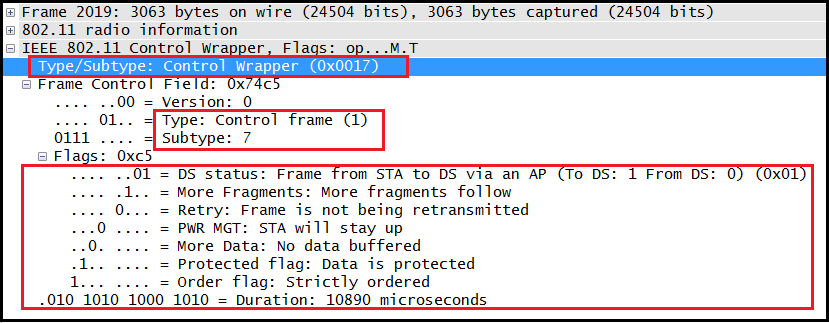
Block ACK and Block ACK Request
Introduced in the 802.11e standard in 2007, Block ACK improves efficiency by allowing multiple QoS data frames to be acknowledged in a single Block ACK frame.
A Block ACK Request is sent after transmitting multiple QoS data frames with the NAV reservation and proper Ack Policy.
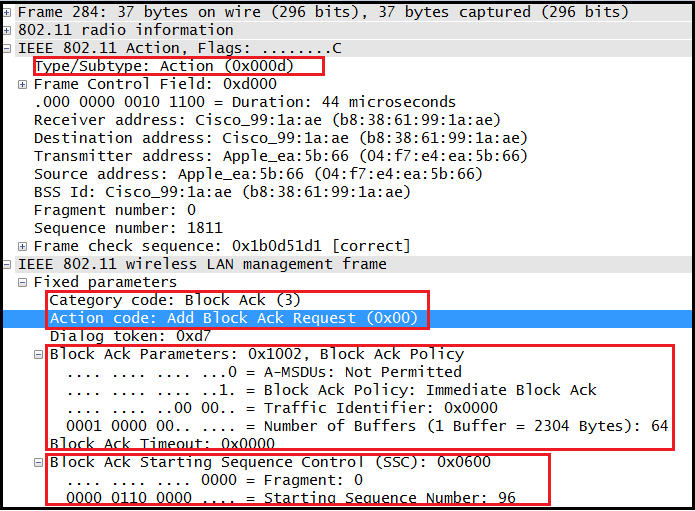
PS-Poll Frame
PS-Poll frames are part of the Automatic Power Save Delivery (APSD) mechanism. These frames allow devices to wake periodically and poll the AP for any pending data.
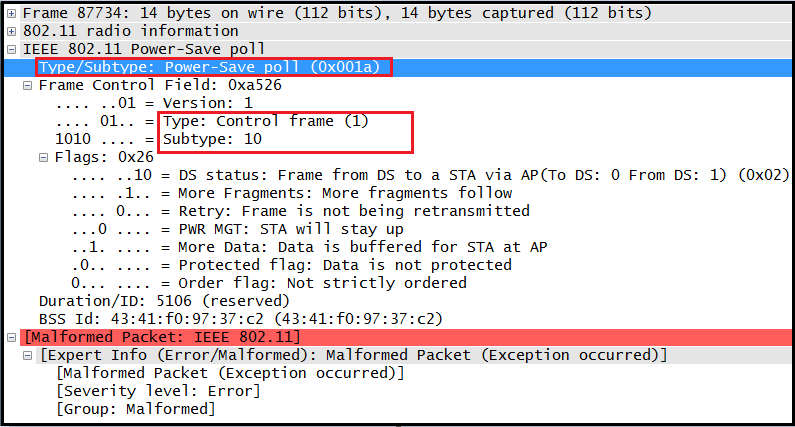
RTS/CTS Frames
RTS/CTS frames coordinate access to the wireless medium to avoid collisions.
RTS Frame
Used to initiate communication in crowded environments. The Duration field in the RTS frame instructs nearby devices to defer transmissions.
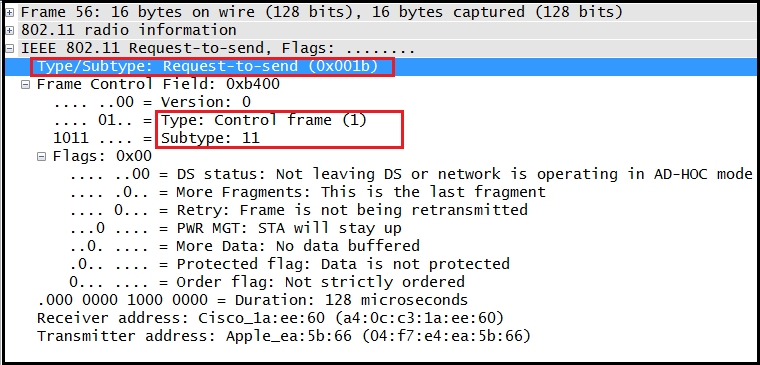
CTS Frame
Sent in response to an RTS frame, the CTS frame reserves the channel for transmission.
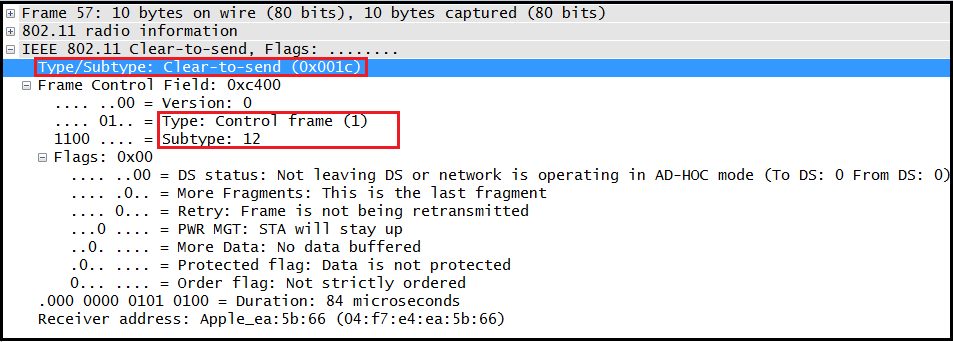
ACK Frame
ACK frames confirm successful receipt of data frames. If no ACK is received, the sender retransmits.
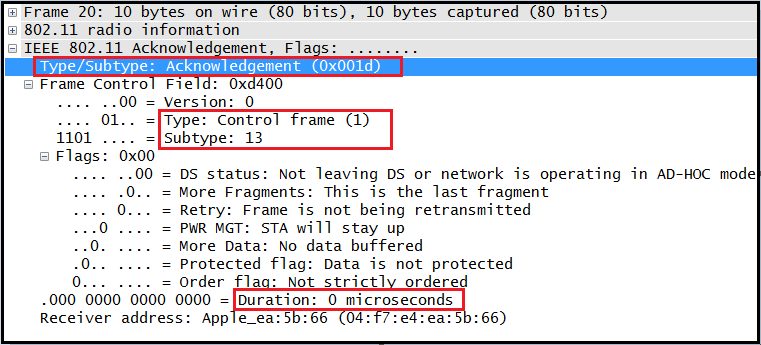
What Are Data Frames?
Data frames in 802.11 networks carry the actual payload data and support various delivery and QoS mechanisms.
Types of Data Frames
Data frames have a type value of 0x02 and support 15 subtypes, including:
- Data
- Data + CF-Ack
- Data + CF-Poll
- Data + CF-Ack + CF-Poll
- Null
- QoS Data
- QoS Data + CF-Ack
- QoS Data + CF-Poll
- QoS Data + CF-Ack + CF-Poll
- QoS Null
Common Data Frame Subtypes
Data + CF-Ack
Acknowledges previously received frames alongside sending new data.
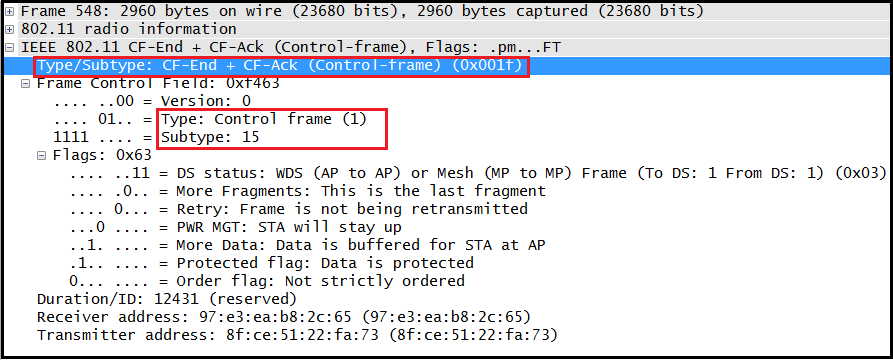
Data + CF-Poll
Carries data and requests the recipient to transmit.
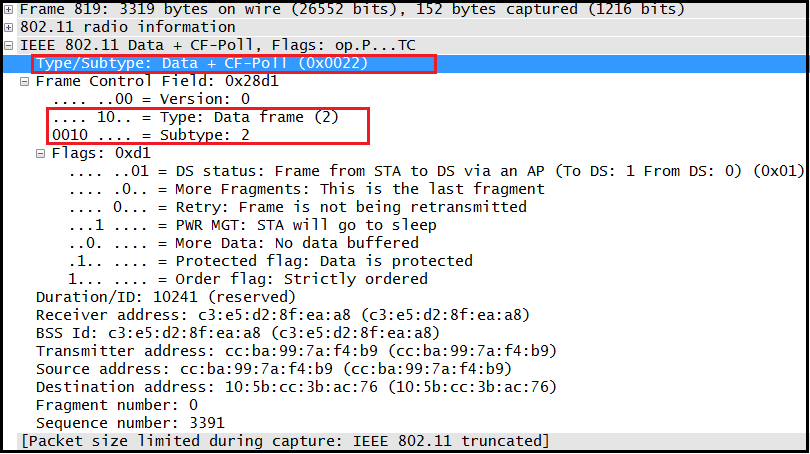
Data + CF-Ack + CF-Poll
Sends data, acknowledges prior frames, and requests data.
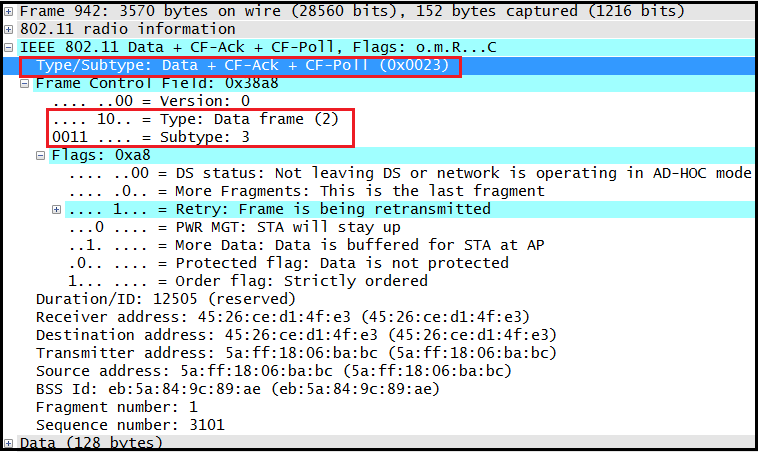
Null Frame
Maintains connectivity with the AP without transmitting data.
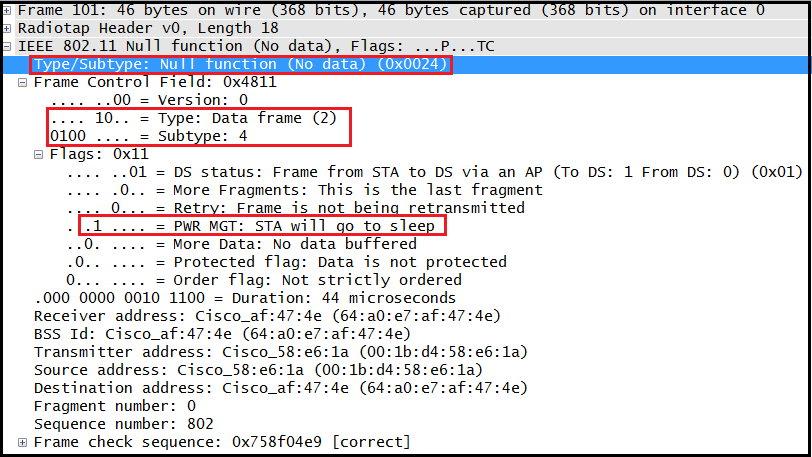
QoS Data
Carries traffic prioritized for latency-sensitive applications.
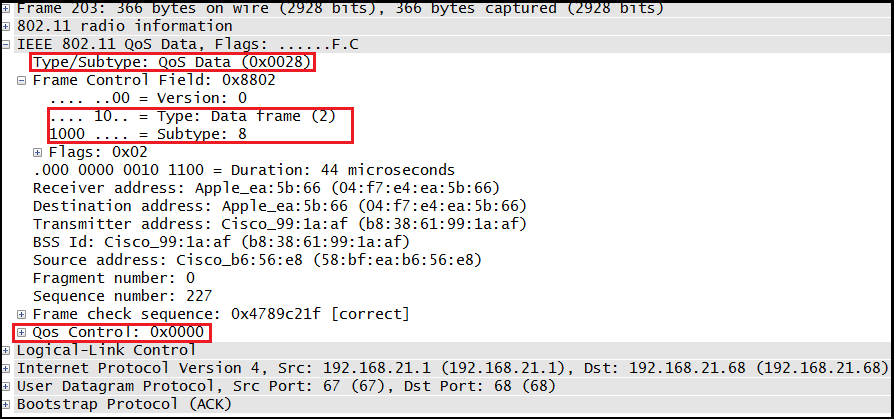
QoS Data + CF-Ack
Combines QoS delivery with acknowledgement.
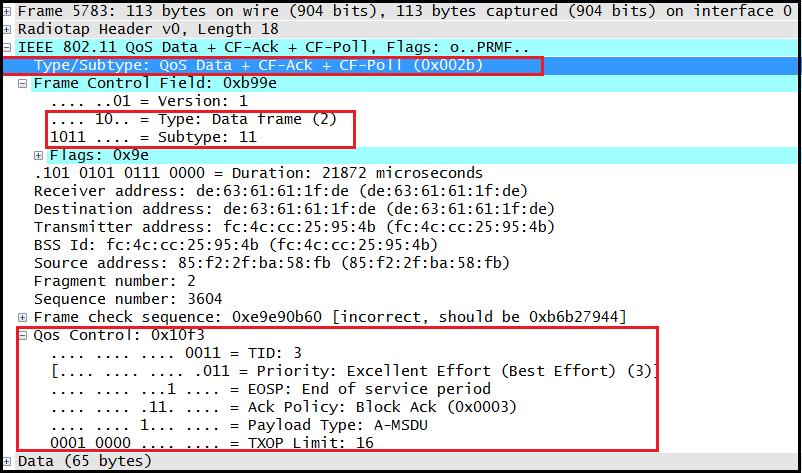
QoS Data + CF-Poll
Requests the recipient to send data, alongside QoS transmission.
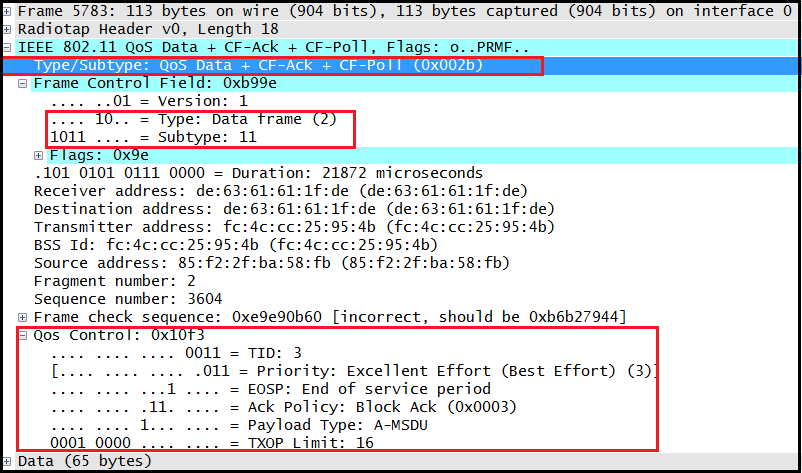
QoS Data + CF-Ack + CF-Poll
Sends QoS data, acknowledges, and requests data.
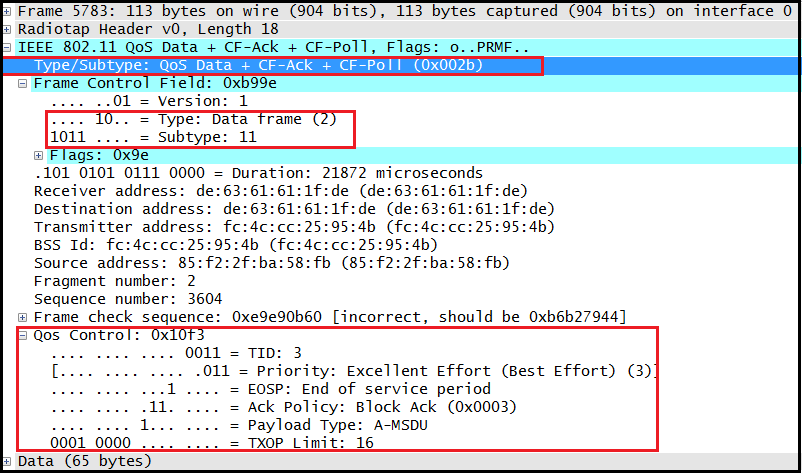
QoS Null
Signals power state or QoS changes without carrying data.
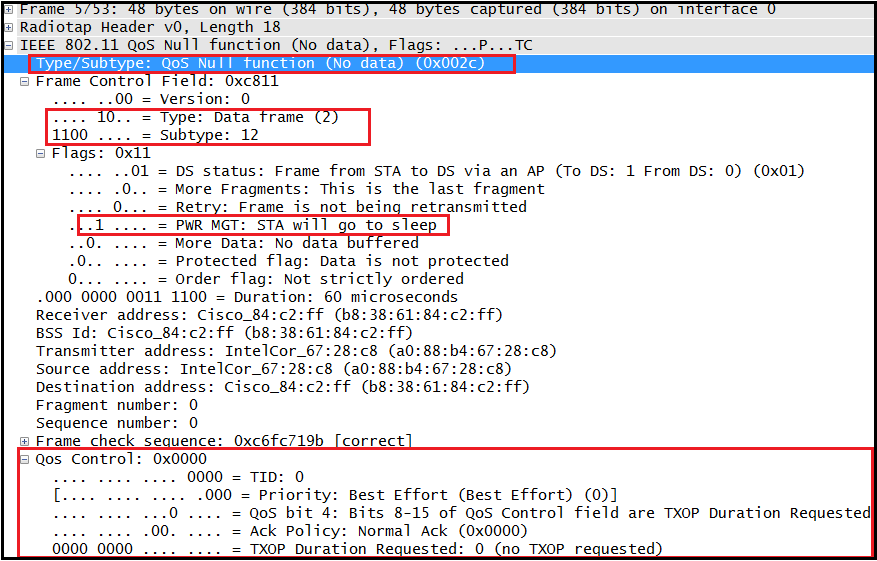
Conclusion
Control and Data frames are foundational to 802.11 Wi-Fi communication. They coordinate traffic, prevent collisions, conserve power, and ensure quality of service.
By understanding how each frame type functions, network engineers and enthusiasts can analyze, troubleshoot, and optimize wireless network performance more effectively.
Got Questions?
Want to dive deeper or request a specific topic? Leave a comment or join our Discord Community — we’re always happy to talk tech!
